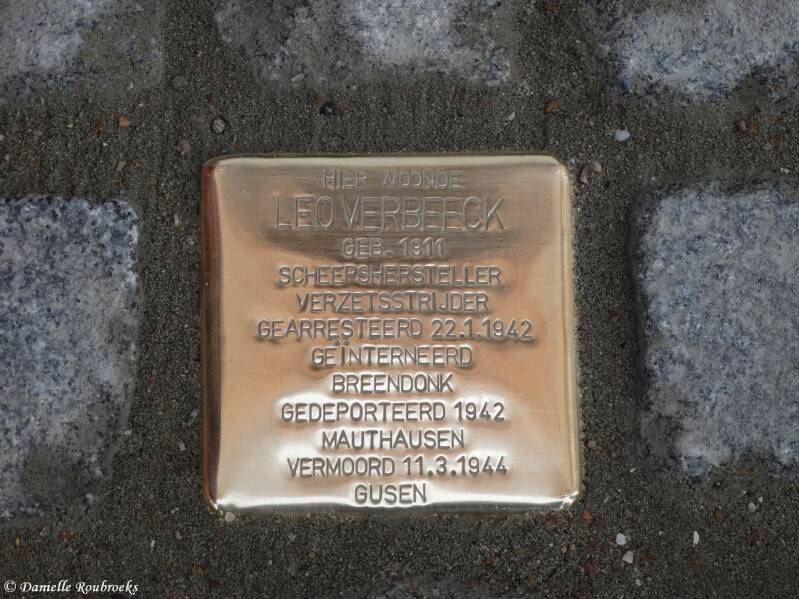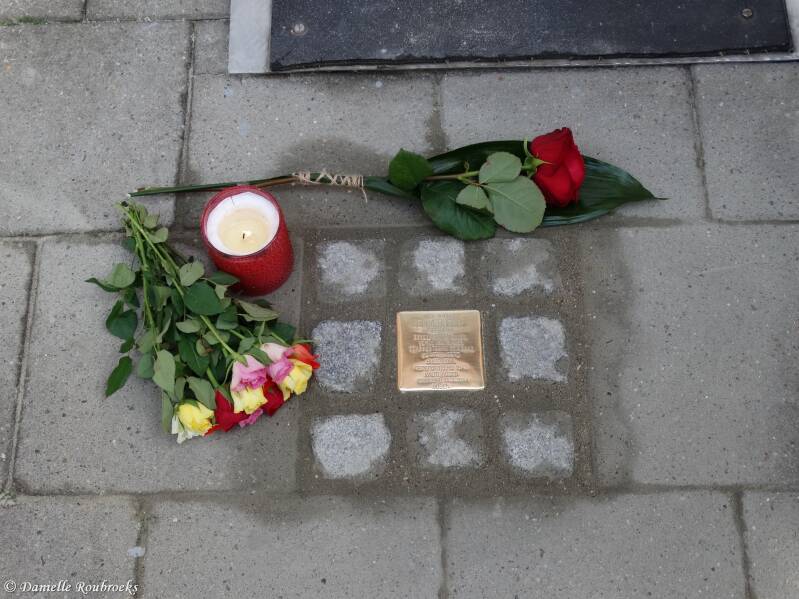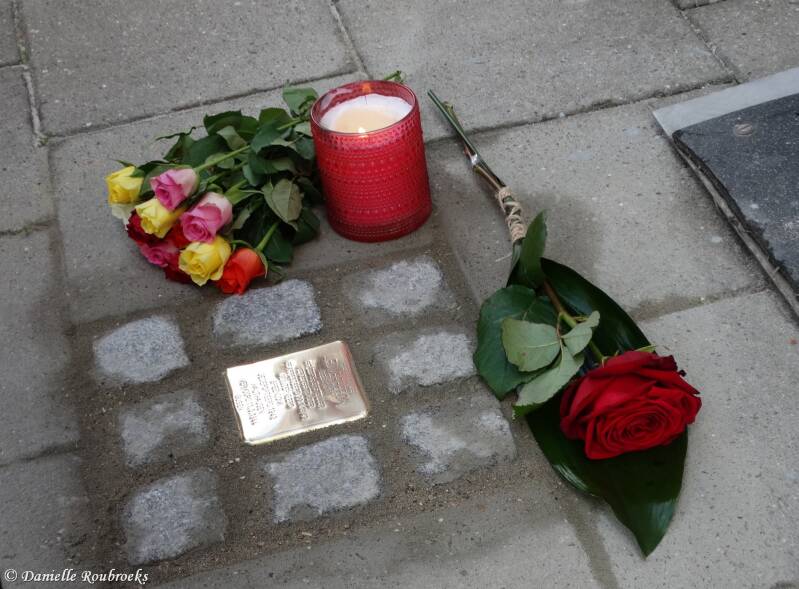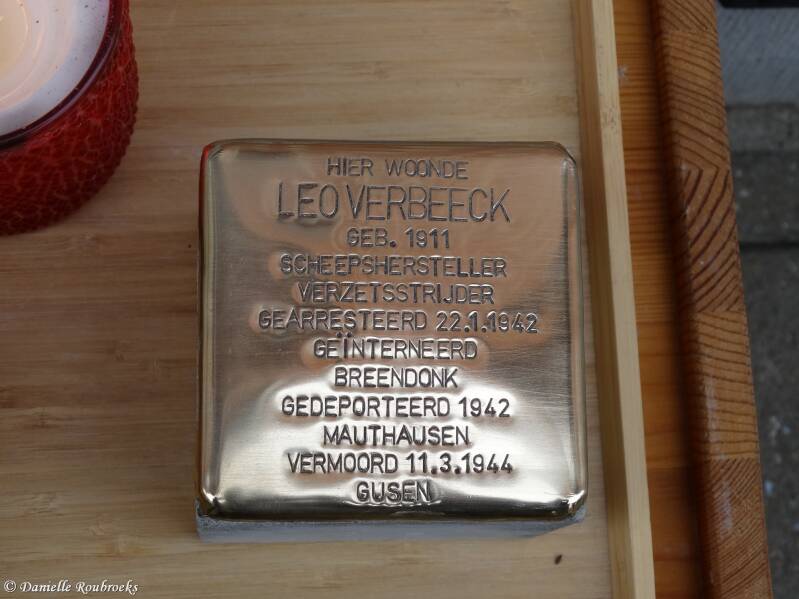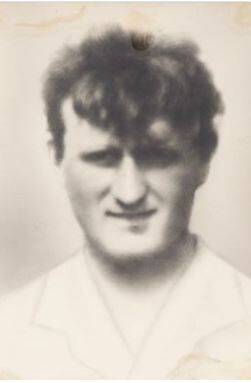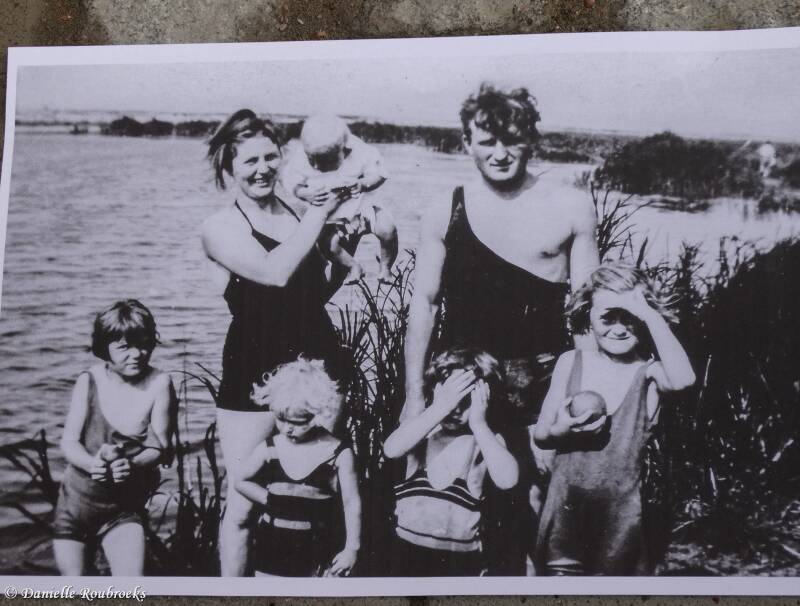Burcht - Stolpersteine
Information: Wikipedia
A Stolperstein literally "stumbling stone", metaphorically a "stumbling block" is a sett-size, 10 by 10 centimetres (3.9 in × 3.9 in) concrete cube bearing a brass plate inscribed with the name and life dates of victims of Nazi extermination or persecution.
The Stolpersteine project, initiated by the German artist Gunter Demnig in 1992, aims to commemorate individuals at exactly the last place of residency—or, sometimes, work—which was freely chosen by the person before he or she fell victim to Nazi terror, euthanasia, eugenics, was deported to a concentration or extermination camp, or escaped persecution by emigration or suicide. As of 29 March 2018, over 67,000 Stolpersteine have been laid in 22 countries, making the Stolpersteine project the world's largest decentralized memorial.
The majority of Stolpersteine commemorate Jewish victims of the Holocaust. Others have been placed for Sinti and Romani people (then also called "gypsies"), homosexuals, the physically or mentally disabled, Jehovah's Witnesses, black people, members of the Communist Party, the Social Democratic Party, and the anti-Nazi Resistance, the Christian opposition (both Protestants and Catholics), and Freemasons, along with International Brigade soldiers in the Spanish Civil War, military deserters, conscientious objectors, escape helpers, capitulators, "habitual criminals", looters, and others charged with treason, military disobedience, or undermining the Nazi military, as well as Allied soldiers.
List of Stolpersteine in the city of Burcht
Koning Albertstraat 55: LEO VERBEECK
Koning Albertstraat 55
hier woonde
LEO VERBEECK
geb. 1911
scheepshersteller
verzetsstrijder
gearresteerd 22.1.1942
geïnterneerd
Breendonk
gedeporteerd 1942
Mauthausen
vermoord 11.3.1944
Gusen
Koning Albertstraat 55
here lived
LEO VERBEECK
born 1911
ship repairer
resistance fighter
arrested 22.1.1942
interned
Breendonk
deported 1942
Mauthausen
murdered 11.3.1944
Gusen
As a resident of Burcht, Leo Verbeeck was involved in the resistance when he was arrested by the Gestapo in 1942. He was eventually transferred to the Mauthausen concentration camp, where he died.


